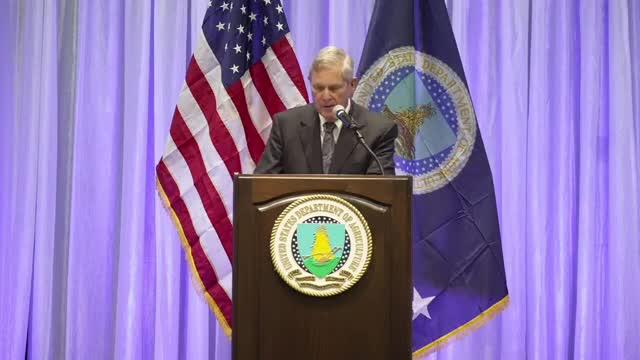Farmers face crisis as small operations vanish
October 18, 2024 | USDA -NRCS, USDA, Executive, Federal
This article was created by AI summarizing key points discussed. AI makes mistakes, so for full details and context, please refer to the video of the full meeting. Please report any errors so we can fix them. Report an error »

In a recent government meeting, officials highlighted the pressing issue of on-farm profitability, emphasizing its critical importance for the future of American agriculture. Over the past 60 years, the U.S. agricultural system has shifted from supply management to a productivity-focused model, which has led to significant changes in the farming landscape. While this shift has made American agriculture the most productive in the world, it has also resulted in the consolidation of farms, leaving small and mid-sized operations struggling to compete.
The meeting referenced historical concerns raised by former Secretary Bob Berglund in 1981, who warned about the alarming trend of farm and farmland loss. Since then, the U.S. has seen a decline of nearly 545,000 farms and over 150 million acres of farmland, equivalent to the combined landmass of several southeastern states. This trend poses risks not only to local rural economies but also to national food security.
Officials stressed the need for a more inclusive agricultural system that supports all producers, regardless of farm size. The current model, which often forces farmers to either expand or exit the industry, is unsustainable. Instead, there is a call for a shift towards a system that prioritizes profitability, sustainability, and resilience, creating new income opportunities for farmers.
Currently, 88% of American farm families rely on off-farm income to sustain their livelihoods, raising questions about the viability of farming as a sole source of income. The meeting underscored the importance of developing multiple income streams for farms, advocating for a model that compensates farmers not only for their production but also for their sustainable practices and environmental stewardship. This approach aims to foster a more equitable agricultural landscape that benefits both farmers and the broader community.
The meeting referenced historical concerns raised by former Secretary Bob Berglund in 1981, who warned about the alarming trend of farm and farmland loss. Since then, the U.S. has seen a decline of nearly 545,000 farms and over 150 million acres of farmland, equivalent to the combined landmass of several southeastern states. This trend poses risks not only to local rural economies but also to national food security.
Officials stressed the need for a more inclusive agricultural system that supports all producers, regardless of farm size. The current model, which often forces farmers to either expand or exit the industry, is unsustainable. Instead, there is a call for a shift towards a system that prioritizes profitability, sustainability, and resilience, creating new income opportunities for farmers.
Currently, 88% of American farm families rely on off-farm income to sustain their livelihoods, raising questions about the viability of farming as a sole source of income. The meeting underscored the importance of developing multiple income streams for farms, advocating for a model that compensates farmers not only for their production but also for their sustainable practices and environmental stewardship. This approach aims to foster a more equitable agricultural landscape that benefits both farmers and the broader community.
View full meeting
This article is based on a recent meeting—watch the full video and explore the complete transcript for deeper insights into the discussion.
View full meeting